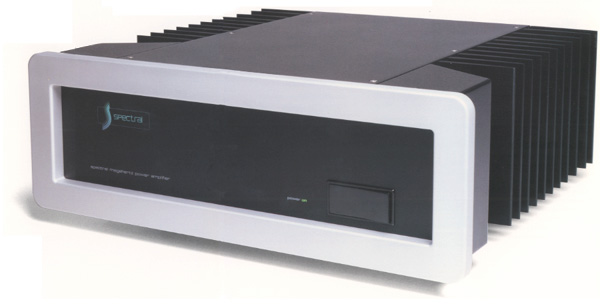


For several years, the development paths followed by manufacturers of the most premium grade, solid state power amplifiers diverged. Some makers pursued the goal of higher and higher output current with almost single-minded determination. Their super high current designs grew impressively in size and weight, as well as in the operating temperatures they generated.
Spectral designed and built very powerful amplifiers as well, but with less emphasis on the current component of output power, and more emphasis on Spectral's traditional values: lightning fast responsiveness, ultra-wide stable bandwidth, and uncompromising linearity.
Clearly there are musical issues underlying these two divergent design philosophies.
The trend towards very high current amplifiers coincided with the development of large, complex speaker systems with elaborate networks for crossover, equalization and balancing of the system and drivers. Conflicts between the control of circulating energy and fine tuning were most readily resolved by employing amplifiers with brute force output capability. The objective was to achieve unshakeable control, along with the dynamics and bass power to reward the listener with a room-filling presence. However, component limitations led manufacturers to build monumental amplifiers of often ponderous design and execution. The price of power became the diminished ability to listen long and deeply into the music.
Spectral has always hewed to the line that an audiophile amplifier of uncompromising quality must do many things well. Extraordinary resolution, ultra-wide stable bandwidth, minimal energy storage, the absolute ability to manage load reactions and to minimize interactions with other components in the audio chain: these are factors which translate directly into truthfulness and realism in musical reproduction. As long as it was necessary to compromise them in order to deliver the single goal of very high output current, Spectral was unwilling to make the trade-off.
PERFECT SYMMETRY
PROTECTING WITHOUT INTRUDING
CIRCUIT DESCRIPTION